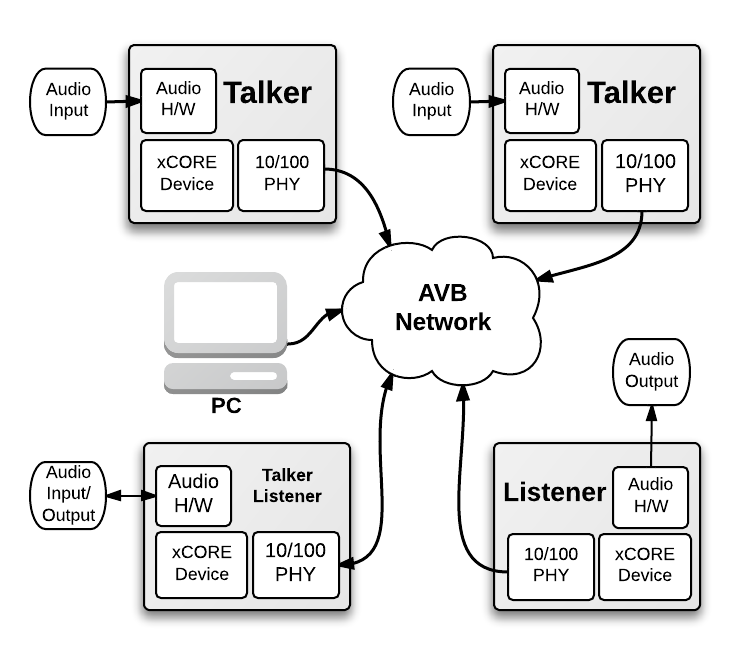Overview
Summary
The XMOS Audio Video Bridging (AVB) endpoint is a reference design that provides time-synchronized, low latency streaming services through IEEE 802 networks. The solution is firmware that is implemented on the XMOS xCORE architecture and can be deployed on a number of different xCORE parts depending on system requirements such as stream and channel count.

XMOS AVB-LC Key Features
- 100 Mbit/s full duplex Ethernet interface via MII
- Support for 1722.1 discovery, enumeration, command and control: ADP, AECP (AEM) and ACMP
- Simultaneous 1722 Talker and Listener support for sourcing and sinking audio
- 1722 MAAP support for Talker stream MAC address allocation
- 802.1Q Stream Reservation Protocols for QoS including MSRP and MVRP
- 802.1AS Precision Time Protocol server for synchronization
- I2S audio interface for connection to external codecs and DSPs
- Media clock recovery and interface to a PLL clock source for high quality audio clock reproduction